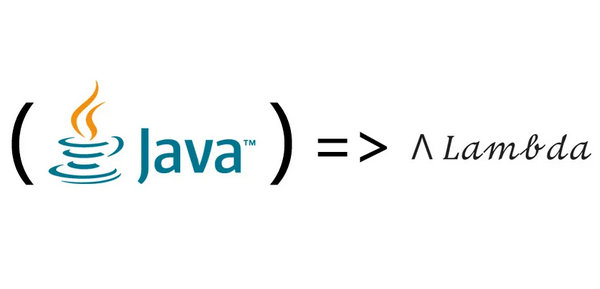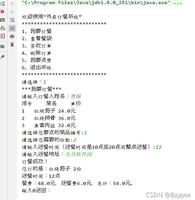java实现信号量

本文介绍的Semaphore实现基于synchronized,wait()和notify/notifyAll(),这是java并发包之前的典型实现方式.在eclipse的源码中可以找到不少这样的案例,下文中也会把eclipse中的几个实现类作为案例以分析之.
注,这里介绍的信号量实现是基于java语言机制,用于实现多线程间的同步操作,所以对S,P(S),V(S)等概念的介绍将结合本文内容,做合适的调整,读者可阅读操作系统相关书籍的信号量章节获取标准定义.
*本文内容
---信号量简介
---典型案例
*Semaphore概述
---通常把一个非负整数称为Semaphore,表示为S.
S可以理解为可用的资源数量.这里不涉及进程问题,所以就假定S>=0.
---S实现的同步机制表示为PV原语操作
P(S):若S=0,线程进入等待队列;否则,—S;
V(S):++S,唤醒处于等待中的线程.
(注,P是荷兰语的Passeren,相当于英文的pass, V是荷兰语的Verhoog,相当于英文中的incremnet).
*案例
1)典型实现
这段程序源自ibm的一本并发书籍,实现了计数信号量{S|S∈{0,N}}和二元信号量(S={0,1})
public abstract class Semaphore {
private int value = 0;
public Semaphore() {
}
public Semaphore(int initial) {
if (initial >= 0)
value = initial;
else
throw new IllegalArgumentException("initial < 0");
}
public final synchronized void P() throws InterruptedException {
while (value == 0)
wait();
value--;
}
protected final synchronized void Vc() {
value++;
notifyAll();
}
protected final synchronized void Vb() {
value++;
notifyAll();
if (value > 1)
value = 1;
}
public abstract void V();
public String toString() {
return ".value=" + value;
}
}
public final class BinarySemaphore extends Semaphore {
public BinarySemaphore() {
super();
}
public BinarySemaphore(int initial) {
super(initial);
if (initial > 1)
throw new IllegalArgumentException("initial > 1");
}
public final synchronized void V() {
super.Vb();
}
}
public final class CountingSemaphore extends Semaphore {
public CountingSemaphore() {
super();
}
public CountingSemaphore(int initial) {
super(initial);
}
public final synchronized void V() {
super.Vc();
}
}
2)实现读写锁
eclipse使用它,解决日志操作相关类在map,数组中的同步问题.
/*******************************************************************************
* Copyright (c) 2008, 2011 IBM Corporation and others
* All rights reserved. This program and the accompanying materials are made
* available under the terms of the Eclipse Public License v1.0 which
* accompanies this distribution, and is available at
* http://www.eclipse.org/legal/epl-v10.html
******************************************************************************/
package org.eclipse.equinox.log.internal;
public class BasicReadWriteLock {
private int currentReaders = 0;
private int writersWaiting = 0;
private boolean writing = false;
public synchronized void readLock() {
while (writing || writersWaiting != 0) {
try {
wait();
} catch (InterruptedException e) {
// reset interrupted state but keep waiting
Thread.currentThread().interrupt();
}
}
currentReaders++;
}
public synchronized void readUnlock() {
currentReaders--;
notifyAll();
}
public synchronized void writeLock() {
writersWaiting++;
while (writing || currentReaders != 0) {
try {
wait();
} catch (InterruptedException e) {
// reset interrupted state but keep waiting
Thread.currentThread().interrupt();
}
}
writersWaiting--;
writing = true;
}
public synchronized void writeUnlock() {
writing = false;
notifyAll();
}
}
3)延迟信号量
这个信号量的亮点在acquire(long delay).
/*******************************************************************************
* Copyright (c) 2003, 2006 IBM Corporation and others.
* All rights reserved. This program and the accompanying materials
* are made available under the terms of the Eclipse Public License v1.0
* which accompanies this distribution, and is available at
* http://www.eclipse.org/legal/epl-v10.html
*
* Contributors:
* IBM Corporation - initial API and implementation
*******************************************************************************/
package org.eclipse.core.runtime.internal.adaptor;
/**
* Internal class.
*/
public class Semaphore {
protected long notifications;
public Semaphore(int count) {
notifications = count;
}
/**
* Attempts to acquire this semaphore. Returns only when the semaphore has been acquired.
*/
public synchronized void acquire() {
while (true) {
if (notifications > 0) {
notifications--;
return;
}
try {
wait();
} catch (InterruptedException e) {
//Ignore
}
}
}
/**
* Attempts to acquire this semaphore. Returns true if it was successfully acquired,
* and false otherwise.
*/
public synchronized boolean acquire(long delay) { //若传入负数,用于判断是否资源已被占
long start = System.currentTimeMillis();
long timeLeft = delay;
while (true) {
if (notifications > 0) {
notifications--;
return true;
}
if (timeLeft <= 0) //在延迟后不再继续尝试获取锁
return false;
try {
wait(timeLeft);
} catch (InterruptedException e) {
//Ignore
}
timeLeft = start + delay - System.currentTimeMillis();
}
}
public synchronized void release() {
notifications++;
notifyAll();
}
// for debug only
public String toString() {
return "Semaphore(" + notifications + ")"; //$NON-NLS-1$ //$NON-NLS-2$
}
*总结
---通过java的对象锁,wait/notify机制模拟的信号量,可以呈现多种形态以应对各种的互斥需求.
---本文给出的例子,具有普遍的适用性.在实践中,咱们可以根据需求定制各种信号量实现.
---jdk1.5提供了Semaphore的另一种实现机制.
以上是 java实现信号量 的全部内容, 来源链接: utcz.com/z/394463.html








